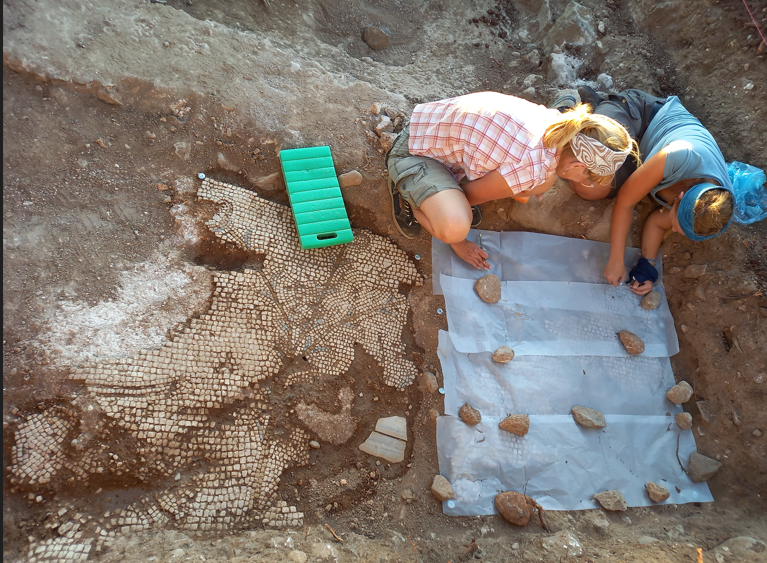Researchers discovered in their digging stone structures said to be made from basalt, plastered walls, water cisterns, and magnificent colorful ceramics and mosaic floors.
The discovery will help to understand the area where the Caliph's palace of Khirbat al-Minya was said to be built on the Sea of Galilee.
Moreover, the researchers performed hands-on digging and geomagnetic surface surveys. The geomagnetic scans assisted the excavation team in digging the exact spots. According to the study, the outcome of the excavation was the accurate result they hoped.
Professor Hans-Peter Kuhnen said that the excavation team hit the jackpot, unveiling the recent insights into the Islamic Caliph's palace Khirbat al-Minya in Israel. Kuhnen is also the site director and archaeologist.
Also Read: Research Shows 518 Million Years Old Worm Resembled Ancestry of Three Major Living Animals
The study explained that the major discovery showed that the early eighth-century Caliph commissioned the area's buildings with a mosque and a 15-meter-high gateway.
Discovery

The researchers unlocked stone structures reportedly made of basalt with colorful mosaic floods, plastered walls, and water cisterns.
- Unveiled images showing the flora and fauna native that reportedly to be native to the Nile valley symbolize the power of the mighty river for the annual floods for Egypt's agricultural abundance.
- While the researchers said that one of the plants shows majestic long and curved stems that are said to be the depiction of the 5th to 6th centuries Nile scene mosaics
- The ceramic findings provided insights into that the area had become occupied by Umayyad and Abbasid caliphates recorded from the 7th to the 11th century.
On the contrary, mosaics and related ceramics are said to date back to the 5th and 7th centuries. The researchers noted a thriving settlement near the lake before the Caliph's palace, in which Jews, Christians, and Muslims were the original inhabitants.
Lead researcher Kuhnen explained the recent discovery unveiled that there were inhabitants before the Caliph Walid constructed his palace on the shore of the Sea of Galilee.
Sugar cane
Furthermore, Kuhnen revealed that sugarcane cultivation in the area produced money. They found a furnace built on stone to process sugar cane and images of massive sugarcane cultivation in the Middle Ages.
The researchers noted caused damage to the ecosystem, finding extensive soil erosion and so-called environmental disaster in the area, in which the lake was said not to be fully recovered by the 20th century.
Ultimately, the researchers added that the research helps understand the contexts of the history of human settlement in the holy land.
The study noted that the pandemic affected the research team for almost three years before they could visit the site again.
Geomagnetic surface surveys
The study mentioned the importance of geomagnetic surface surveys guiding the excavation team to locate the most accurate spot.
The technology above is useful by using magnetic sensors to detect even tiny variations, including previous construction work, according to the research. It assisted archaeologists in digging targeted test pits.
The project was supposedly archeological field work to train students. However, they found striking findings in the area.
Related Article: Researchers Discover Longhorned Tick in Northern Missouri, Urging Farmers' Vigilance for Infestation
For more similar stories, don't forget to follow Nature World News.
© 2025 NatureWorldNews.com All rights reserved. Do not reproduce without permission.





